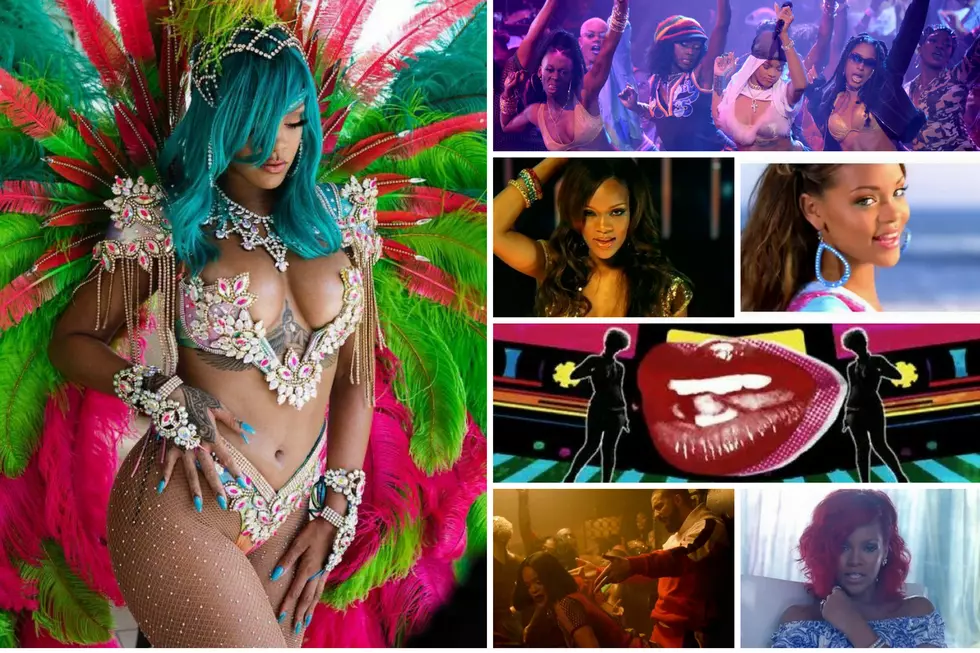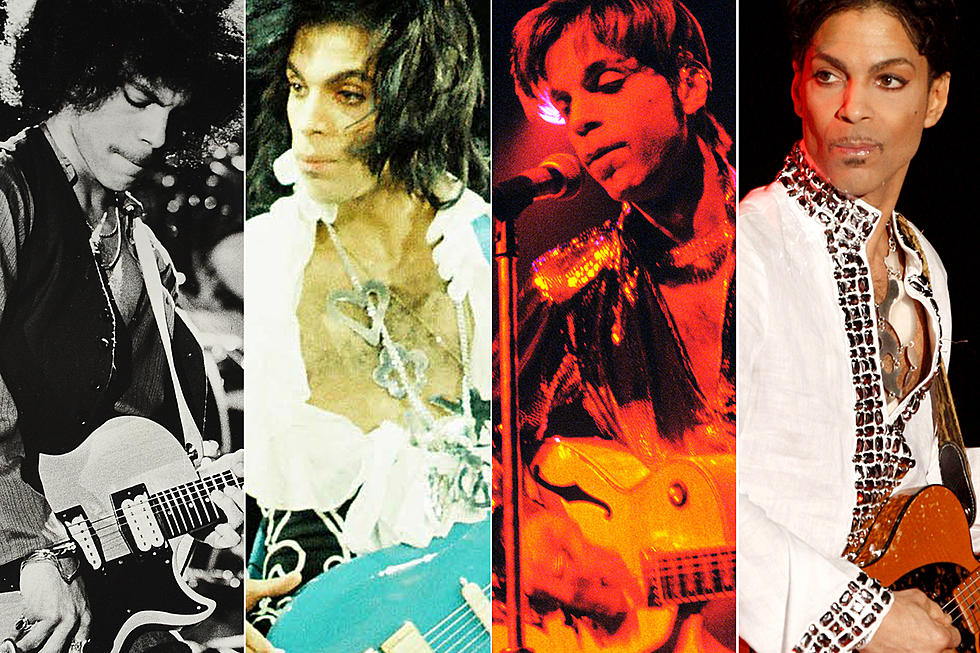![Sacha Jenkins Talks Art, Culture and ‘The Burning of Kingston’ [EXCLUSIVE INTERVIEW]](http://townsquare.media/site/625/files/2014/07/sacha-jenkins-red-bull-b-w.jpg?w=980&q=75)
Sacha Jenkins Talks Art, Culture and ‘The Burning of Kingston’ [EXCLUSIVE INTERVIEW]
For years Manhattan’s Soho neighborhood has been a cultural hotspot in New York, a city already teeming with culture. What was a struggling artists’ enclave just a few decades ago is now home to numerous luxury brands’ flagship stores, boutique hotels, and celebrities like Kanye West. That’s not to say there aren’t still remnants of the old days: though art meccas like Pearl Paint on Canal Street have shuddered there are still spots like graffiti specialty store Scrap Yard on West Broadway and street wear stores like Supreme on Lafayette or Stussy on Spring Street. The gentrification of the area doesn’t necessarily mean the old Soho is dead, it just means that the street art kids and skaters and punks now have to share sidewalk space with more tourists, shoppers and the fashion crowd.
Renaissance man Sacha Jenkins knows the streets of Soho well. He’s been coming here since he was a snot-nosed teen selling homemade ‘zines and tagging people’s black books, now as a forty-something he finds himself back in the area with an office on Wooster Street, a partner in creative agency and production company Decon and the Creative Director and guiding force behind the recently revived Mass Appeal magazine. As we sit in the noisy upstairs dining area of the Japanese market around the corner from his office building he indulges his sweet tooth with some dark chocolate. Between nibbles he thinks out loud looking for a way to describe all of the things he’s done or is doing without making it seem like he’s reading through a six-page resume. He finally finds the words: “I just try to surround myself with creative people and creative opportunities,” he says in his distinctly high-pitched and unmistakable voice. It’s that simple.
He’s being a little modest of course. Jenkins has been influential in the worlds of hip-hop, graffiti, hardcore and punk and New York City culture for over 20 years. In no particular order he started influential hip-hop magazine ego trip (a brand he extended into books and two successful TV series), he’s been a biographer for Eminem ('The Way I Am') and the Beastie Boys (upcoming), curated graffiti art shows at prestigious museums and galleries, produced television shows for VH1 and MTV, directed documentaries (a forthcoming film, 'Fresh Dressed'—which is about the history of hip-hop fashion—for CNN films) and even started a band with hardcore punk legend Darryl Jenifer of the Bad Brains (The White Mandingos). And he’s a dad…A lot for one man to handle? Sure, but Jenkins is a man so compelled by creativity that’s it’s difficult to imagine his life any other way. “Being creative is just the core of who I am. If I don’t have the outlet for my creativity I get really depressed.”
Without popping pills or talking to a shrink Jenkins staves off the bad vibes by keeping his hand in many pots and keeping like-minded individuals close whether that was the ego trip crew of the past or rapper Murs, who is also a member of the White Mandingos. Like Soho, these types of associations with good people have been a recurring theme in his life. Way back in ’88 he started publishing his first graf ‘zine (Graphic Scenes & X-plicit Language) and sold it at space across the street from where the aforementioned Scrap Yard store stands today. Selling his ‘zine and hanging out with other “vandals” and “artists” led him to the nearby studio of photographer and filmmaker Henry Chalfant who became a legend for his documentation of New York’s then nascent subcultures of hip-hop and graffiti art. The first time young Sacha knocked on Chalfant’s door he didn’t get to meet the cool, older white dude with the great graf pics, instead he met an African American cat who was some years his senior; Carl “San 2” Weston was working out of Chalfant’s space at the time. Weston would carry the torch of street art documentation by way of his popular underground 'Video Graf' series. 'Video Graf' captured graffiti writers in their element in the act of beautifying (or vandalizing) the urban scenery as they saw fit. Though not widely known outside of the graffiti underworld, the series was extremely influential in the community of street artists because it documented many of the heavy hitters—folks like COPE2 Kaws—artists who would go on to be come icons on their own terms. If you look at some of the early installments of Video Graf you’ll see a slim kid with a high pitched voiced reciting graffiti-inspired beat poetry between swigs of a 40oz. bottle of beer – that’s young Sacha Jenkins. Though he’s put the 40s down, he’s still singing the gospel of graf not just preaching to the choir but trying to educate the art world and the world at large about this important subculture and moment in time.
“What I‘ve been pushing forward through the books I’ve done on the history of graffiti [is] sort of pushing forward what it meant to people inside of the community. What a ‘piece book’ means to us,” he says. “Because until we define what a piece book means to us and what the value of it is then what does it mean to the art world at large? How do you expect the art world to say ‘Well, that’s worth a million dollars and they don’t even understand what it is and they don’t have perspective or history?” Jenkins’s passion for art has led him to partner with Red Bull on a number of programs that give the public unprecedented access to the world of graffiti and street art. “Through the Write of Passage event that me and Chino BYI and Mass Appeal put together with the support of Red Bull we were able to curate a show with art work that spanned from 1973 up through now. We had a subway car façade created inside of there [that was] painted by legendary graffiti artists and for me that was the biggest victory. For me all this stuff was born on trains and the ultimate canvas is a train.” Visually impressive, the painted subway car façade wasn’t just a sight to behold but for Jenkins it was also a meaningful statement to the world: “The statement was ‘Yeah, there’s money and yeah there’s the art world, all that other s--t – f--k that! It started here on the side of a train this is how you wanna appreciate the art. You don’t have the ability to do that any more but this is how I learned, this is the culture that I was a part of. This is New York City. This is what it is.’”
Extending the “Subway Art” theme Jenkins has once again partnered with Red Bull and the Trolley Museum of New York to recast a commemoration of New York State’s Revolutionary War history as an opportunity to celebrate the artistic genius of city kids in the 1970s and the global art movement they sparked. “In September we’re gonna have this big event [called] ‘The Burning of Kingston.’ Kingston used to be the capital of New York State and a lot of historic revolutionary war events transpired there,” he explains. “In 1777, the Red Coats, on their way out of Kingston, pretty much burned the city down so every two years Kingston has this commemorative event called ‘The Burning of Kingston’ where people actually burn things and people dressed in Red Coat regalia march through the town. My thinking is we’re gonna do an event at the museum called the ‘Burning of Kingston’ where I’m gonna get eight graffiti artists from different crews, get a bunch of names put ‘em in a hat draw them at random and figure out who’s painting and who the teams are from that vantage point. So it’s not biased, it’s a real free for all and you don’t know who’s going to paint with whom. Then you’re gonna have four guys on each team, four guys on each side and each side can’t see what the other side is painting and they will have four or five hours to paint what they paint, we’ll have judges, we’ll have a trophy and it’ll be fun.” The event promises to reflect the competitive nature of the graffiti world but will also give attendees a rare glimpse into the process that gave the art form life years back. “No matter who wins or who loses it’ll be a pure representation of what it was like when people painted trains: four guys got together to paint these pieces to say something to compete not with the art world but to say something to people within a community and that is really missing in New York now.”
His candy bar done and brief break from a long day of doing things, Sacha Jenkins and I leave the Japanese market and head back to the busy streets of Soho he talks about of music projects he’s working on and new emerging artists he’s into (rappers Your Old Droog and Rast RFC to be specific) with excitement in his voice. As we part ways one of his observations echoes: “What I saw in the hardcore scene, hip-hop, graffiti and skateboarding is a level of fearlessness and a level of people being naïve. And that combination of fearlessness and being naïve create something that’s kinda true to who people really are.” And with that you have Sacha Jenkins in a nutshell: a man driven by creativity because it’s who he is.
More From TheBoombox


![[Exclusive] Mýa Talks New ‘TKO’ Album & 20 Years of Making Music: ‘I Am Relentless’](http://townsquare.media/site/625/files/2018/07/Mya-Stucco-Wall-22.jpg?w=980&q=75)
![[Exclusive] Mario Talks Upcoming ‘Dancing Shadows’ Album, Creative Freedom & Keeping R&B Music Alive](http://townsquare.media/site/625/files/2018/07/mario.jpeg?w=980&q=75)


![LeToya Luckett Announces Her Pregnancy in the Most Adorable Way [VIDEO]](http://townsquare.media/site/625/files/2018/06/GettyImages-634473090.jpg?w=980&q=75)

![[EXCLUSIVE] Raheem DeVaughn Talks New Music, ’90s R&B & How Rap Influenced Him with The Boombox](http://townsquare.media/site/625/files/2018/05/Raheem-Devaughn.jpg?w=980&q=75)
